AEG washing machine does not spin
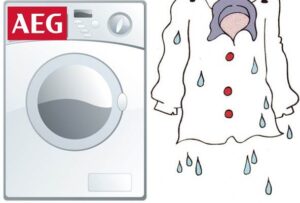 When the washing machine is completed, but instead of clean and almost dry things you get wet clothes and a drum filled with water, then the equipment needs diagnostics. If your AEG washing machine does not spin clothes, then you are faced with one of the most common problems. At the same time, the lack of spin does not always indicate serious damage, because sometimes the problem can arise due to inattention. Let's figure out what exactly happened to your “home assistant.”
When the washing machine is completed, but instead of clean and almost dry things you get wet clothes and a drum filled with water, then the equipment needs diagnostics. If your AEG washing machine does not spin clothes, then you are faced with one of the most common problems. At the same time, the lack of spin does not always indicate serious damage, because sometimes the problem can arise due to inattention. Let's figure out what exactly happened to your “home assistant.”
What happened to the machine?
Under no circumstances should you turn a blind eye to such a problem as a missing spin. The point is not only that spinning clothes on your own is long and difficult, but also that an uncorrected problem with spinning can lead to new damage to the equipment and completely destroy the equipment. That is why it is so important to carry out modern diagnostics and repairs of the device. First, let's list all the reasons why there may be no spin in the SM.
- The user selected the wash mode without spin.
- There is an imbalance in the drum.
- The drain doesn't work.
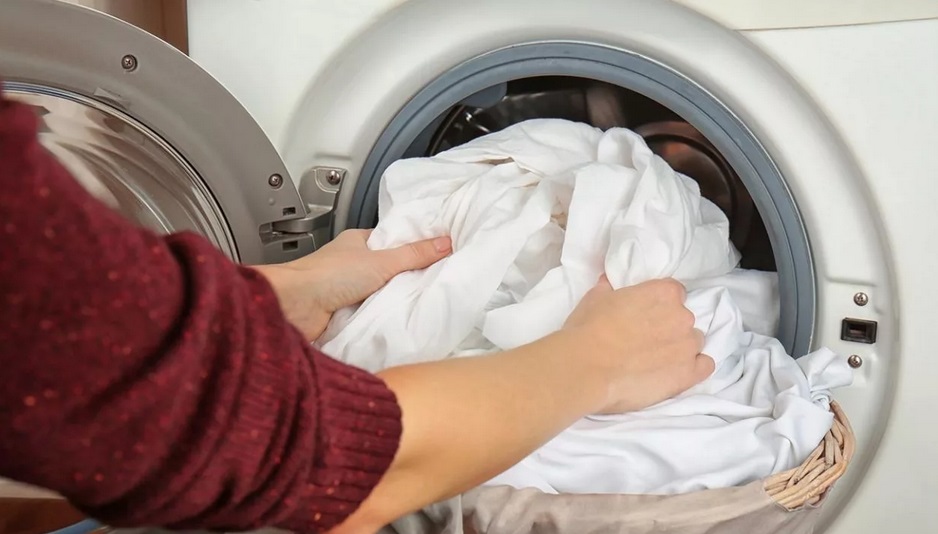
- The tachogenerator is broken.
- The electric motor has failed.
- Drum bearings are worn out.
- The SM control module has stopped working.
- A foreign object has entered the tank and is preventing the drum from rotating.
In most cases, the problem can be fixed with your own hands at home, without even turning to a specialist for help. It is necessary to call a technician only in a situation where the control board has burned out. It is very difficult to cope with such a problem on your own.We will diagnose the device, checking all the components of the washing machine step by step.
Is the program chosen correctly?
First, you should check the most basic reasons, which can be sorted out in a few minutes even without special equipment. This is due to the fact that most often there is no damage to the machine, and it is all due to a simple user error. For example, a washing mode could be selected in which there is no spin, say, a program for wool, silk or down.
If you suspect this option, then simply find the official user manual and once again carefully study the description of the mode you chose for washing - it will indicate whether it has a spin or not. From now on, just don't select this work cycle if you need to wring things out. Additionally, it is worth checking whether you have accidentally disabled the spin cycle in a program that provides it by default.
Just in case, lock the SM control panel to prevent the possibility of accidentally connecting or disabling additional options.
Most new washing machines allow you to control the number of drum revolutions during spinning, including completely disabling this mode. Conduct a short test where you select a program, set the maximum spin speed and wait for the cycle to complete. If after this you get wet things again, then you need to move on to further checks.
Is the laundry bunched up?
Another common reason for the lack of spin on AEG equipment is drum imbalance. It is caused by an excessive amount of laundry loaded for one working cycle, an insufficient amount of laundry, as well as uneven distribution of clothes inside the drum.Most often, a similar problem happens with old equipment, because the newest washing machines have a special function that controls the balance.
It is very simple to determine that this is the cause of the malfunction - the “home assistant” will unsuccessfully try to spin the drum to the required speed. This will cause the cycle to complete approximately 7-15 minutes faster than it should have with the spin running, and all the clothes in the drum will be wet. To correct the situation, follow the instructions.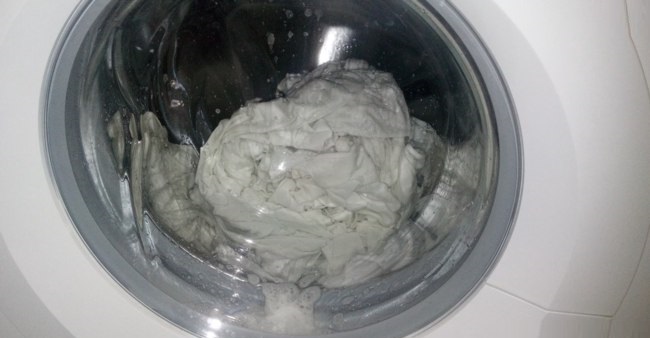
- Wait until the UBL allows you to open the machine door.
- Remove some items if there is an overload, or add more if there is a shortage, or break up the resulting lump of laundry.
- Close the hatch door.
- Start a separate spin mode.
- After finishing work, check whether things are dry.
Another problem of imbalance is its negative impact on shock absorbers, bearings and shaft, which is why it must be corrected in a timely manner. Be mindful of laundry load limits to avoid adding too many or too few items. If you have a “home assistant” designed for 5 kilograms, then do not add less than 1 kilogram of things to it, and if the machine is designed for 9 kilograms, then the lower limit will be 2.5 kilograms.
Does water come out of the machine?
If the work cycle is completed, and things are not only wet, but also floating in water, then most likely the cause of the malfunction is hidden in the drain system. Probably, the washer was unable to drain waste water because the pump burned out, the pump impeller was blocked, or because the hoses or pipes were clogged. To accurately determine the problem, you need to perform a number of manipulations.
- Disconnect the drain hose from the sewer and probe it to make sure there are no blockages. If there are blockages, the hose must be unscrewed and washed under a powerful stream of hot water.
Since the general sewer system occasionally becomes clogged, to check it is necessary to lower the drain hose into the sink or bathtub to make sure that the problem is in the drain hose.
- Find the drain hatch located at the bottom right of the cm, pry it off with a screwdriver and open it. Place any container under it that will hold the waste liquid from the garbage filter. After draining the water, you need to clean the filter with the pipes, and you can additionally check the contacts with a multimeter.
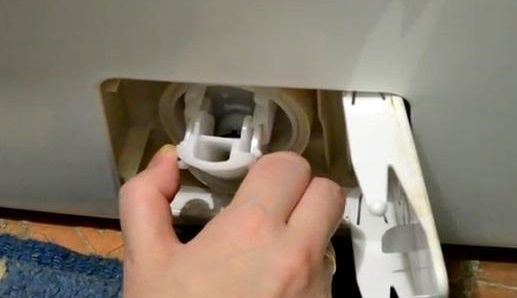
- Check the serviceability of the pump, for which you need to clean the impeller of any dirt, rinse the pump body, and also check the resistance with a multimeter.
If the pump and filter are damaged, then you don’t even have to try to repair them, but immediately buy new parts. Once all checks have been completed and elements have been replaced, run the fastest cycle to check drain functionality. If after washing there is no water left in the drum, then the cause of the malfunction with the spin cycle is definitely not related to the drainage system.
The engine or tachogenerator is to blame
Finally, it remains to check a few key components of the washing machine. Spin problems may be caused by an electric motor that is unable to accelerate the drum to the required speed. Commutator motors can slow down due to worn brushes - in this case, soaking, washing and rinsing will be carried out properly, but problems will arise during the spinning stage. If all stages of the work cycle are difficult at once, then most likely the motor itself is faulty. You can check this like this:
- disconnect the “home assistant” from the power supply and water supply;
- disconnect the back panel of the case;
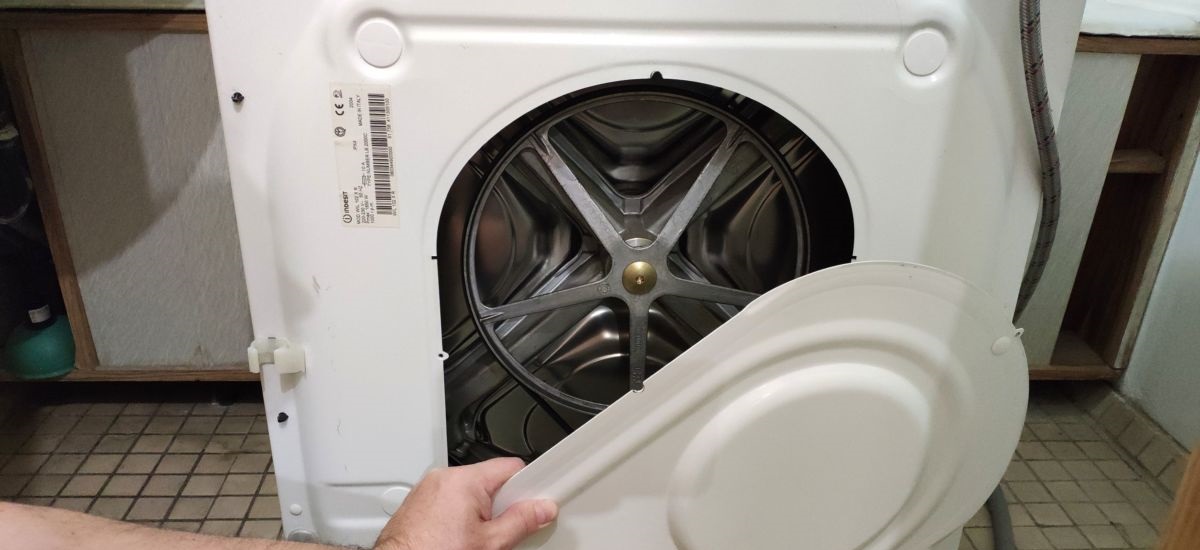
- remove the drive belt;
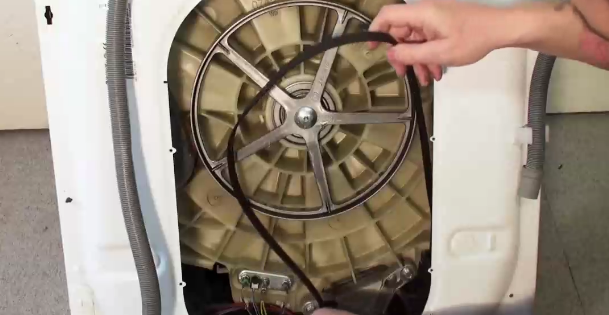
- disconnect all wiring, not forgetting to first take a photo of the correct connection;
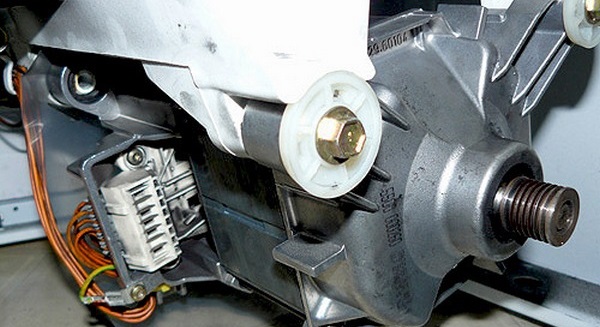
- loosen the fixing fasteners and remove the electric motor.
Inspect the motor for damage, burning spots, charred wires and other visible problems. Also examine the motor brushes - you need to remove them from the body, open them, check the contacts and measure the length of the tip, which should be at least 0.7 millimeters. If the length is shorter, you will have to replace the pair at once, even if one of the brushes is normal.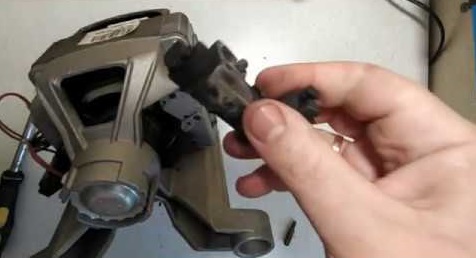
There will also be problems with spinning if the tachometer, which controls the number of drum revolutions per minute and transmits this data to the CM control module, fails. If this element is damaged, the control board does not receive accurate information and, as a precaution, reduces the power of the electric motor. The part may fail in the following cases:
- Frequently exceeding the maximum permissible weight of laundry in the drum;
- using the washing machine without interruption;
- loose fastenings;
- damaged wiring and loose contacts;
- sudden voltage drops during operation of household appliances.
If you suspect a tachogenerator, then first of all inspect the wires, tighten the terminals, strip and insulate the conductors, and then check the assembly with a multimeter. In case of any deviations, do not try to repair the element, but simply buy a new sensor.
Interesting:
Reader comments
- Share your opinion - leave a comment





















Add a comment